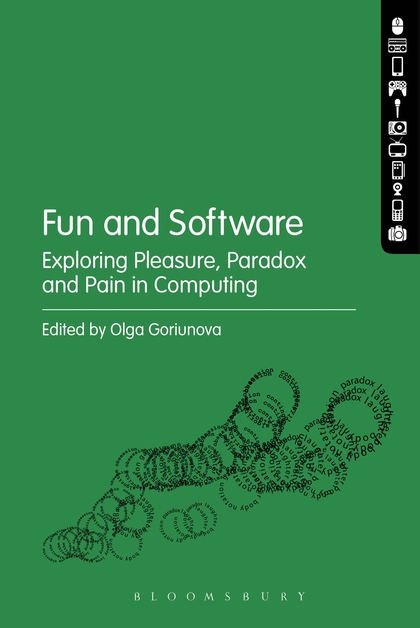Oz Magazine (1963-73)
Filed under magazine | Tags: · cartoon, censorship, counterculture, drugs, gender, hippies, humour, music criticism, politics, rock, satire, sexuality, underground


“Having outraged the Australian establishment with a satirical magazine called Oz, the editor and founder Richard Neville and artist and cartoonist Martin Sharp hightailed it to swinging London. They immersed themselves in the alternative culture of artists, activists, writers and musicians who operated underground of the mainstream.
This underground fuelled by the optimism and excitement of the time and financed largely by the rock aristocracy and dope dealing wanted to change the world. Richard Neville relaunched Oz magazine in the same satirical style as the Australian version, it was not long before L.S.D. altered minds and Oz exploded into a riot of colour and along with the already existing IT newspaper became a mouthpiece for the underground. Oz lasted for 48 issues from the start of 1967 to the end of 1973.” (Source)
“Oz was a focal point for many confrontations between progressive and conservative groups over a range of issues including the Vietnam War, drugs, the generation gap, censorship, sexuality, gender politics and rock music, and it was instrumental in bringing many of these concerns to wider public attention. Above all, it focused public attention on the issue of free speech in democratic society, and on how far short of the ideal Australian and English society actually was at that time.
Through both its lives, the two key figures in Oz were Neville and Sharp, but the ‘honour roll’ of Oz alumni includes many famous names like Robert Hughes, Richard Walsh, Germaine Greer, Jim Anderson, Felix Dennis and Charles Shaar Murray.” (Source)
Published in Sydney, 1963-69, and London, 1967-73
PDFs of Oz’s precursor, The Arty Wild Oat (2 issues, 1962)
PDFs of Sydney version (42 issues)
PDFs of London version (48 issues)
OZ & Yellow House Collections, gallery (1960s-70s)
Major Waldemar Fydrych: Lives of the Orange Men: A Biographical History of the Polish Orange Alternative Movement (2014)
Filed under book | Tags: · 1980s, activism, communism, dissent, happening, humour, poland, politics, protest, revolution, social movements

“In Communist Poland, Surrealism Paints You!!!
Between 1981 and 1989 in Wroclaw Poland, in an atmosphere in which dissent was forbidden and martial law a reality, the art-activist Orange Alternative movement developed and deployed their “socialist sur-realism” in absurd street-painting and large-scale performances comprising tens of thousands of people dressed as dwarves, in an effort to destabilize the Communist government. It worked. Beginning with the ‘dialectical painting’ of dwarves onto the patches of white paint all over the city’s walls, which uncannily marked the censorship of opposition slogans, the group moved on to both stage happenings and over-enthusiastically embrace official Soviet festivals in a way that transformed both of these into mass expressions of dissent. They illegally restaged the mass spectacle of the storming of the Winter Palace on the anniversary of the October Revolution using their own homemade tanks; organized patriotic gatherings in which anyone waving red flags or wearing red (or eating red borscht, or covering oneself in ketchup) was arrested; and inspired other Orange Alternative groups to appear across the country. Although the group existed to the left of the mainstream opposition of Solidarity, their art was a key, acknowledged factor in the overthrow of the Communist government.
Lives of the Orange Men tells the story of the movement’s main protagonists, and is the first stand-alone English-language account of the Orange Alternative, written autobiographically by is central figure, and featuring an appendix of newly translated key texts including Major’s “Manifesto of Socialist Surrealism,” a timeline of every Orange Alternative happening, and a new foreword from the Yes Men.”
Foreword by the Yes Men
Edited by Gavin Grindon
Translated by David French
Publisher Minor Compositions, 2014
Open Access
ISBN 9781570272691
328 pages
Review: Stewart Home (ArtReview, 2014).
See also other publications about the Orange Alternative
Comment (0)Olga Goriunova (ed.): Fun and Software: Exploring Pleasure, Paradox and Pain in Computing (2014)
Filed under book | Tags: · abstraction, aesthetics, affect, algorithm, art, body, code, computing, game, humour, labour, logic, media, media theory, politics, programming, software, software art, software studies, theory, time

“Fun and Software offers the untold story of fun as constitutive of the culture and aesthetics of computing. Fun in computing is a mode of thinking, making and experiencing. It invokes and convolutes the question of rationalism and logical reason, addresses the sensibilities and experience of computation and attests to its creative drives. By exploring topics as diverse as the pleasure and pain of the programmer, geek wit, affects of play and coding as a bodily pursuit of the unique in recursive structures, Fun and Software helps construct a different point of entry to the understanding of software as culture. Fun is a form of production that touches on the foundations of formal logic and precise notation as well as rhetoric, exhibiting connections between computing and paradox, politics and aesthetics. From the formation of the discipline of programming as an outgrowth of pure mathematics to its manifestation in contemporary and contradictory forms such as gaming, data analysis and art, fun is a powerful force that continues to shape our life with software as it becomes the key mechanism of contemporary society.”
Texts by Andrew Goffey, Simon Yuill, Matthew Fuller, Luciana Parisi and M. Beatrice Fazi, Adrian Mackenzie, Michael Murtaugh, Geoff Cox and Alex McLean, Wendy Hui Kyong Chun and Andrew Lison, Christian Ulrik Andersen, Brigitte Kaltenbacher, Annet Dekker, and Olga Goriunova.
Publisher Bloomsbury, New York and London, 2014
New Media and Technology series
ISBN 1623560942, 9781623560942
285 pages
Software studies page on Monoskop
Comment (0)
